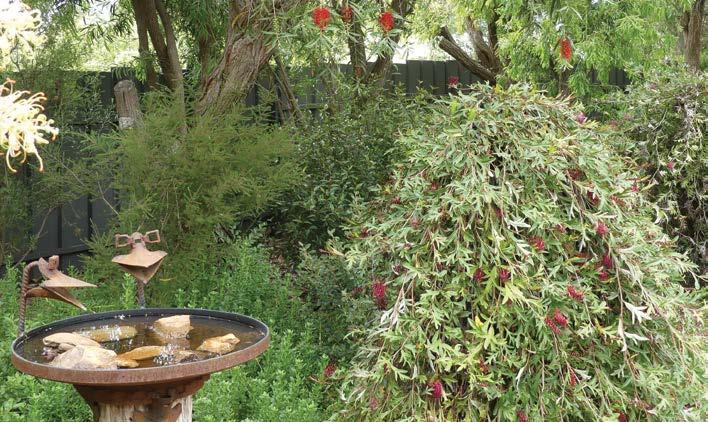
14 minute read
Native animals
Attracting native animals to your garden can add extra colour, interest and enjoyment. Here’s how:
Small critters in your garden
Invertebrates such as bees, butterflies, ladybirds, ants, gnats, beetles, moths, spiders, dragonflies, lacewings and even flies and wasps benefit the environment in many ways. They are our plant pollinators, our waste recyclers, our pest eaters and an important source of food for many native birds, frogs, reptiles and mammals. They are fascinating to observe, they help our gardens to thrive and their presence attracts yet more wildlife! Insects have diverse life stages. Flowers often attract adult insects that feed on nectar and pollen. Try to support the whole insect lifecycle. For example, for butterflies and moths, grasses and particular plant leaves are important for their eggs and caterpillars. Native bees create nest cells in timber, pithy stems or in the ground. Some invertebrates use plant resin, leaves or mud to make their nests. You can help by providing these.
Transverse Ladybird Beetle (KR) Fiddler Beetle ( KR)
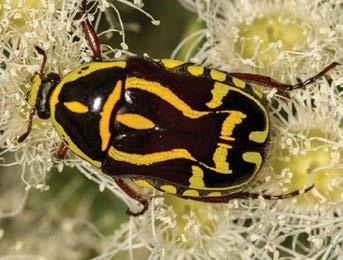
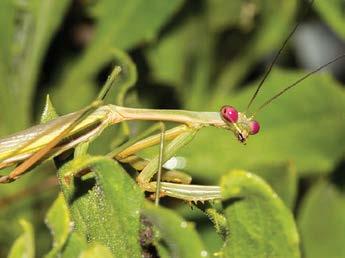
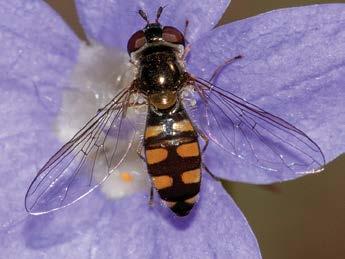
Native bees and other pollinators
A wide range of insects, as well as some birds and bats, are important pollinators. Pollinator insects include many species of bees, flies, moths, wasps, butterflies, beetles, thrips and some ants. There are over 1,600 species of native bee in Australia. Most are solitary bees which nest in holes in the ground or small holes in timber and plant stems. Consider adding a ‘bee hotel’ to your habitat garden to observe their nesting habits. Support native bees and other flower-feeding insects with flowering plants, stems to roost on or nest in (such as Flax-lily), and by retaining some dead wood and exposed soil.
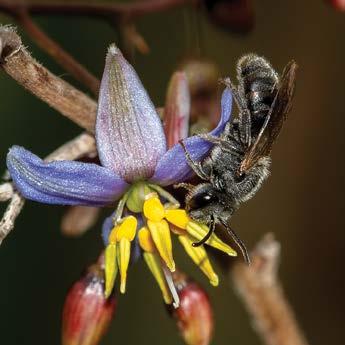
Sweat Bee (KR) Leafcutter Bee (KR)
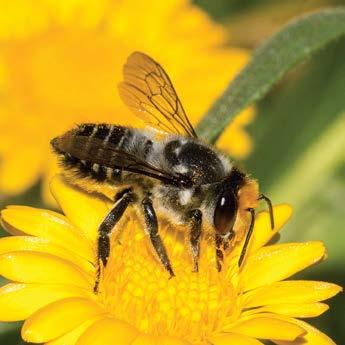
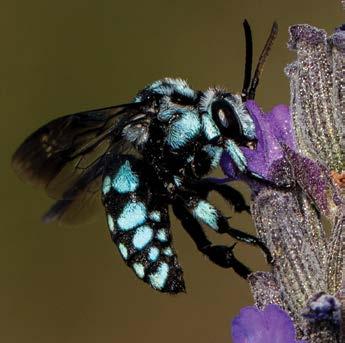
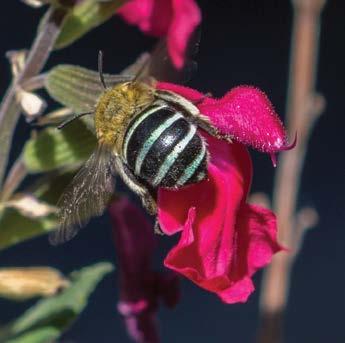
Australian Painted Lady
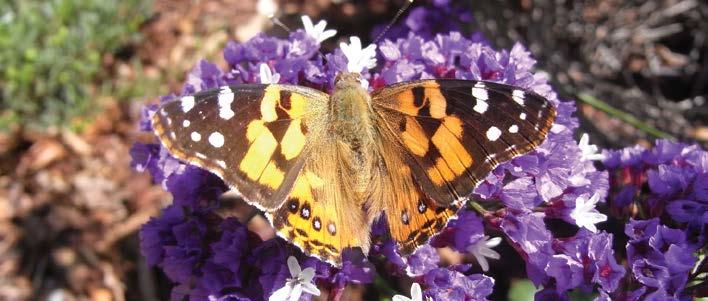
Attracting invertebrates to your garden
Plant a range of plants, e.g. flowering plants to provide nectar and pollen as food, trees that shed bark for insects to hide in and grasses for butterflies and moths to lay eggs on. Consider including plants with different flower sizes, shapes, smells, colour and flowering times through the year to support a wide range of insects. Provide water that is accessible for invertebrates that can’t swim (they need to stand on the edge, a plant or floating material). Leave a few logs and branches of varying size in your garden beds or nearby. Add bush mulch to your garden beds to provide food and shelter for leaf litter munchers. Practice non-toxic pest control!
Plants to attract invertebrates
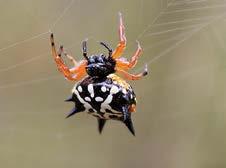
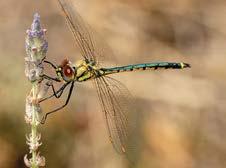
Brachyscome Daisies (Brachyscome species) Everlasting Daisies (Chrysocephalum species and Xerochrysum viscosum) Chocolate Lily (Dichopogon strictus) Bulbine Lily (Bulbine bulbosa) Thryptomene (Thryptomene saxicola ‘F.C. Payne’) Common Tussock-grass (Poa labillardieri) Kangaroo Grass (Themeda triandra) Tall Sedge (Carex appressa) Spiny-headed Mat-rush (Lomandra longifolia) Austral Indigo (Indigofera australis) Bottlebrush (Callistemon species) Sweet Bursaria (Bursaria spinosa) Tea-trees (Leptospermum species) Feather Spear-grass (Austrostipa elegantissima) Flax-lilies (Dianella species)
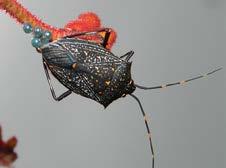
Shield Bug laying eggs ( SB)
Tau Emerald Dragonfly (KR)
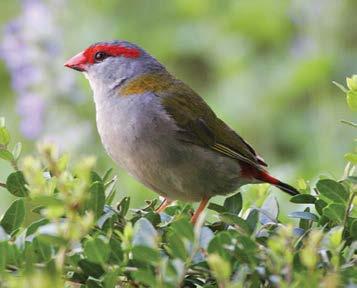
Eastern Yellow Robin (NB) Red-browed Finch (NB)
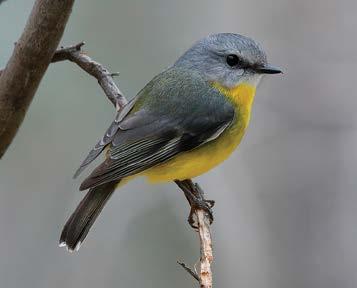
Attracting small birds to your garden
Small birds are fantastic to have in your garden as they help control insects, recycle nutrients and disperse seeds. Birds such as the Red-browed Finch, Silvereye, Eastern Yellow Robin, Grey Fantail and Superb Fairy-wren forage in the protected lower levels of the garden and feed on berries, seeds, insects and spiders. The following list are examples of native plants that will provide habitat for small birds in your garden.
Black Anther Flax-lily (Dianella revoluta) Mat-rushes (Lomandra species) Clustered Everlasting (Chrysocephalum semipapposum) Climbing Saltbush (Einadia nutans) Small-leaved Clematis (Clematis microphylla) Common Tussock-grass (Poa labillardieri) Kangaroo Grass (Themeda triandra) Hedge Wattle (Acacia paradoxa) Sweet Bursaria (Bursaria spinosa) Saltbushes (Rhagodia & Enchylaena species)
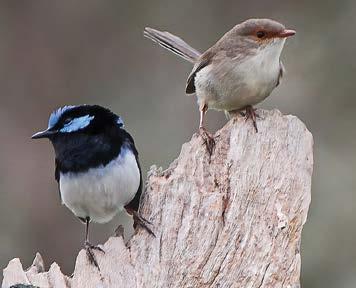
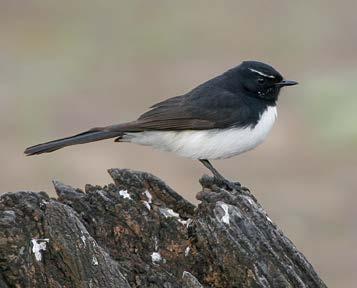
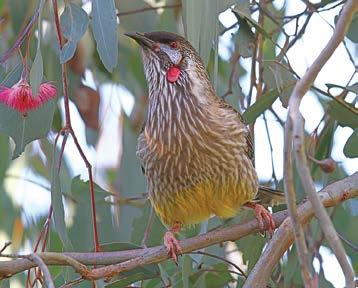
New Holland Honeyeater (NB) Red Wattlebird (NB)

Attracting honeyeaters to your garden
Honeyeaters are a group of birds that have a special brush-tipped tongue which they use to take up nectar from flowers. Local honeyeater species such as the Eastern Spinebill, Red Wattlebird, Blue-faced Honeyeater, New Holland Honeyeater and Whiteplumed Honeyeater can often be found feeding in plants that produce a lot of nectar but also can be seen feeding on insects as a source of protein and to feed to their chicks in spring. The following plants will help attract honeyeaters to your garden.
Woolly Grevillea (Grevillea lanigera) Running Postman (Kennedia prostrata) Austral Indigo (Indigofera australis) Cat’s Claw Grevillea (Grevillea alpina) River Bottlebrush (Callistemon sieberi) Common Correa (Correa reflexa) Golden Wattle (Acacia pycnantha) Hop Bitter-pea (Daviesia latifolia) White Correa (Correa alba) Mountain Bush-pea (Mirbelia oxylobioides)
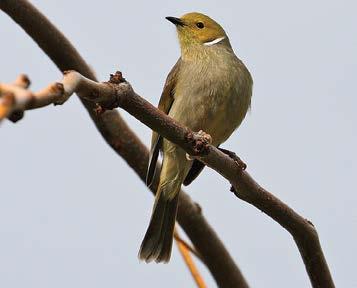
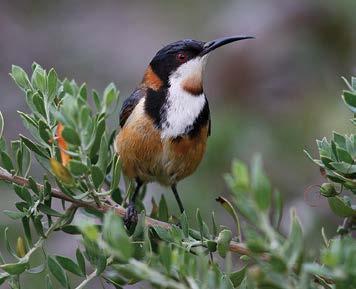
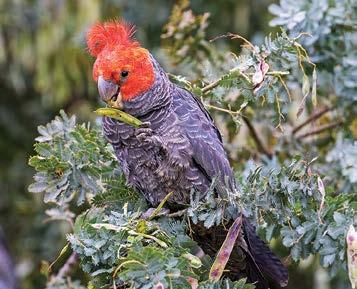
Galah (CC) Gang Gang Cockatoo (Male) (NB)

Attracting parrots to your garden
The parrot family contains birds such as the cockatoos, rosellas, lorikeets and of course parrots. Local species such as the Crimson Rosella, Eastern Rosella, Rainbow Lorikeet and Gang-gang Cockatoo feed on the flowers and seed of eucalyptus, sheoaks and bottlebrush trees. Red-rumped Parrots feed mainly on the ground targeting the grass of indigenous or exotic grass seed and the Yellow-tailed Black Cockatoo loves to find grubs hiding under tree bark. The following plants will attract parrots to your garden.
Common Tussock-grass (Poa labillardieri) Small Gum Trees (Eucalyptus species) Lemon Bottlebrush (Callistemon pallidus) Blackwood (Acacia melanoxylon) Drooping She-oak (Allocasuarina verticillata) Silver Banksia (Banksia marginata) Prickly Tea-tree (Leptospermum continentale) Showy Wattle (Acacia decora)
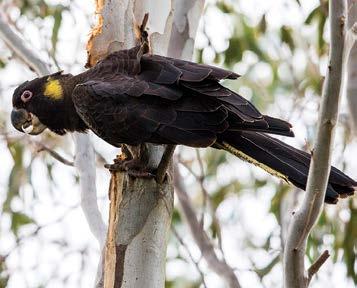
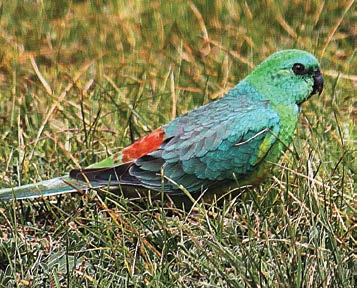

Laughing Kookaburra (NB) Barking Owl (NB)
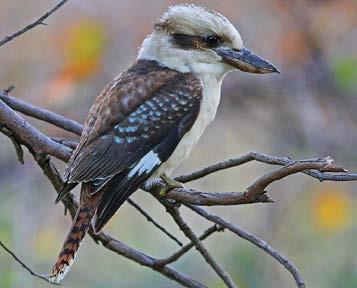
Attracting large birds to your garden
Birds such as the Tawny Frogmouth, Boobook Owl, Australian Magpie, Laughing Kookaburra and the Pied and Grey Butcherbird feed on small mammals, lizards and large insects. If your backyard is big enough, one or more large trees in your garden will provide roosting spots for them to rest and hunt. The following tree species will attract large birds to your garden.
Kurrajong (Brachychiton populneus) Blackwood (Acacia melanoxylon) Lightwood (Acacia implexa) Drooping She-oak (Allocasuarina verticillata) White Cypress Pine (Callitris glaucophylla) Gum Trees Red, Yellow and White Box and dwarf species (Eucalyptus species). Check the mature size before planting.
Birds can help maintain a healthy balance in your habitat garden by removing garden pests.
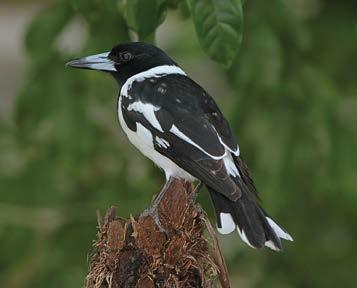
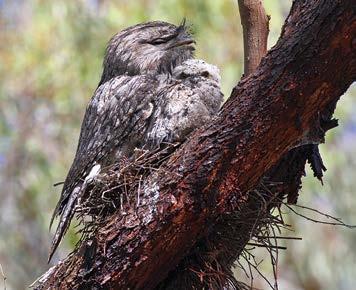
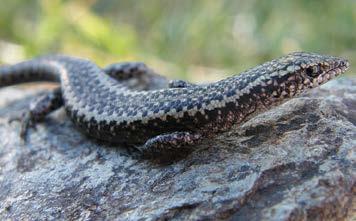
Ragged Snake-eyed Skink (DM) Southern Marbled Gecko (DM)
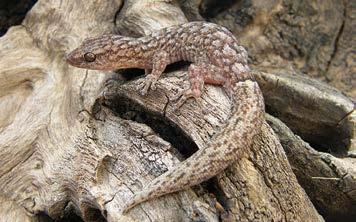
Attracting lizards to your garden
With over 1,030 species, Australia is a global hotspot of reptile diversity, hosting 10% of the world’s snake and lizard species. Many species are under threat and have declined due to loss of habitat and invasive plants. In urban gardens, many lizards face attacks by cats and dogs, encounters with lawn mowers and poisoning from eating snail bait (even pet-friendly products). To encourage skinks and geckos such as the Blue-tongue Lizard, Wall Skink, Garden Skink and Marbled Gecko into your garden, provide some protected shelters like flat rocks, logs or brick pavers in a sunny spot for them to warm up. Encourage lots of leaf litter and provide mulch where they can hunt for insects and include native tussock grasses, low growing shrubs and creepers for protection.
Plants to attract lizards
Kangaroo Grass (Themeda triandra) Wallaby-grass (Rytidosperma species) Red-anther Wallaby-grass (Rytidosperma pallidum) Tussock-grass (Poa species) Mat-rush (Lomandra species) Purple Coral-pea (Hardenbergia violacea) Creeping Saltbush (Rhagodia spinescens) Daphne Heath (Brachyloma daphnoides)
Consideration of snakes
Snakes perform a vital role in the environment by preying on rats and mice. Snakes are secretive and generally avoid busy residential areas. But they may occasionally appear in a suburban garden when looking for a meal, during the mating season or during hot summer months to escape the heat. You can make your garden less appealing by ensuring you avoid having stacks of timber and tin lying around or long grass, and sit your compost bin on chicken wire. If you encounter a snake in your garden you should not try and handle it yourself. Not only is this dangerous, but it is illegal to kill a snake. Instead contact a professional snake catcher.
Attracting frogs to your garden
Frog populations have undergone serious decline in recent decades and a third of species are now listed as threatened worldwide. Australia has been identified as a global hotspot of frog decline with fifteen species listed as endangered, twelve species listed as vulnerable and four species that are extinct. Not only are frogs vulnerable to habitat loss and feral animal predation, but they are also susceptible to disease, pollution, pesticides and climate change. Albury-Wodonga is home to many species of frogs including the Eastern Banjo Frog, Spotted Marsh Frog, Peron’s Tree Frog and the threatened Sloane’s Froglet. Creating a permanent frog-friendly garden will help in the conservation and management of these species.
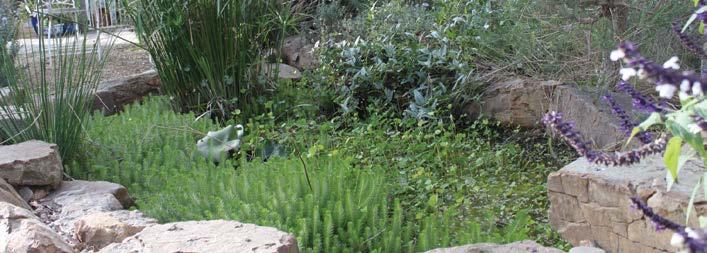
Plants to attract frogs Deep water zone:
Nardoo (Marsilea drummondii) Running Marsh-flower (Villarsia reniformis) Water Millfoil (Myriophyllum crispatum)
Shallow water zone:
Common Sedge (Carex tereticaulis) Common Spike-rush (Eleocharis acuta) Tassel Sedge (Carex fasicularis)
Damp zone:
Marsh Club-sedge (Bolboschoenus medianus) Swamp Stonecrop (Crassula helmsii) Water Plantain (Alisma plantago-aquatica)
Pond surround:
Knobby Club-rush (Ficinia nodosa) Loose-flower Rush (Juncus pauciflorus) Spiny-headed Mat-rush (Lomandra longifolia)
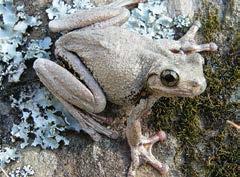
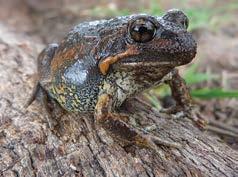
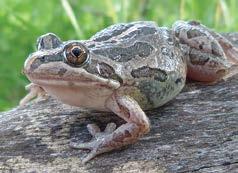
Building a frog pond
Locate your pond in a low-lying section of the garden that has 60-70% shade. Shade from shrubs and small trees is preferable to large overhanging trees, which may drop too many leaves and cause excessive nutrient loading in your pond. You can buy ready-made ponds or dig your own and line it with heavy-duty pond lining. An important factor is to ensure your pond has varying depth that includes a ramped shallow entry point and a deeper section to place potted aquatic plants. Be aware that safety fencing may be required depending on water depth. Please check your design complies with relevant regulations. Side shelves allow for additional variation and a wider range of plants. Add rocks and logs to create climbing spots and consider using a slab of rock as a water-side observation area. Cover the bottom of your pond with washed gravel. Allow your pond to fill with rainwater or tap water. Chlorinated tap water needs to stand in a clean container for 5 days to allow the chlorine to dissipate before it is added to your frog pond. Remember frogs are very susceptible to chemicals. Once your pond is full, add your plants.
Cross-section of frog pond
DAMP ZONE SHALLOW WATER ZONE DEEP WATER ZONE POND SURROUND
ROCKS & LOGS FOR SHELTER
Sand
A pond with submerged rocks and logs can attract frogs to your garden.
Pond liner SUMMER LOW WINTER DEEP WATER LEVEL
WATER LEVEL
SUBMERGED ROCKS & LOGS FOR ALGAL GROWTH
Essentials
A pump should not be necessary. Tadpoles and eggs often die in pumps. As long as you do not have an excess of leaf litter falling into your pond that will result in a smothering layer of algal growth, your pond should remain healthy. Avoid floating aquatic plants such as Azolla (Azolla filiculoides) and Duckweed (Spirodela oligorrhiza) as they can quickly cover the surface of your pond reducing light and oxygen levels. Do not introduce fish into your frog pond as they will snack on tadpoles.
Attracting mammals to your garden
Albury-Wodonga is home to many mammal species and with Australia having the worst mammal extinction rate in the world we gardeners can really help our poor mammals. As 20 percent of our remaining species are threatened with extinction our gardens and parks can be a haven. While some gardeners despair when their roses and vegetable crops become the food source of possums, we do have to remember that our homes have replaced their natural habitat. In turn they have adapted extremely well to the abundance of food and excellent nesting sites suburban properties offer. Most likely you will encounter Eastern Grey Kangaroos, Swamp Wallabies, Echidnas, Wombats or Koalas within the bushland reserves in the region. Mammals more likely to visit your garden include the Common Ringtail Possum, Common Brushtail Possum, Squirrel Glider, microbats and the Grey-headed Flying-fox. Providing trees with hollows or species-specific nesting boxes, will encourage possums, gliders and microbats to nest away from your roof, especially if you close up any entry points. Microbats such as the Lesser Long-eared Bat and Gould’s Wattled Bat eat an enormous quantity of insects each night.
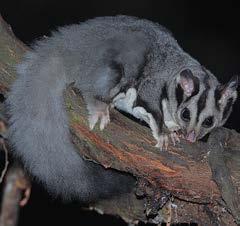
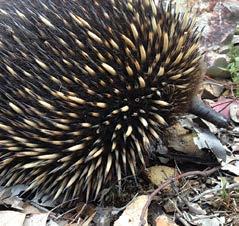
Grey-headed Flying-fox (CC) Short-beaked Echidna Squirrel Glider (MLLS)
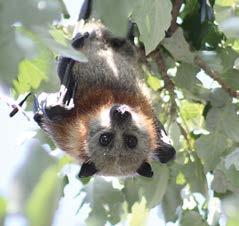
Plants to attract mammals
Small Gum Trees are excellent for attracting mammals to your garden as they provide both food and shelter. Wattles, banksias, bottlebrushes and grevilleas are all rich sources of food. Add a wide variety of plants that flower at different times of the year to support your local mammals. Consider the spacing of trees to allow easy movement for tree-dwelling species. The following plants will attract mammals to your garden. Wattles Paperbarks (Acacia species) (Melaleuca species) Bottlebrushes Gum Trees (Callistemon species) Red, Yellow and White Box and dwarf Grevilleas (Grevillea species) species (Eucalyptus species). Check the mature size before planting. Tea-trees (Leptospermum species) Rose She-oak (Allocasuarina torulosa)
Living with wildlife
Occasionally wildlife can result in unwanted pressure on our garden plants. Consider some of the following options to manage wildlife in your garden.
Tree guards
If your young plants are in danger of being eaten it is worthwhile protecting them with staked tree guards until they are established.
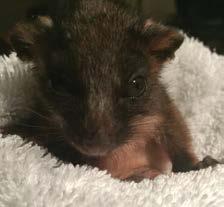
Netting
Loosely woven netting will trap wildlife and should be avoided. Choose netting with a mesh size less than 1cm². As a rough guide, if you can insert your finger through the netting it is capable of trapping wildlife.
Supplementary feeding
Tempting as it may be to put out seed for parrots or nectar for honeyeaters, you may be causing them more harm than good. Wildlife can become dependent on artificial food that may in some situations lead to malnutrition. Feeding stations can attract numerous birds to the same area on a regular basis. Multiple birds eating and defecating in these small areas can greatly increase the spread of disease. A constant supply of ‘easy’ human food can also disrupt the natural population density within an area. Rather than artificially feeding wildlife, plant lots of food-producing native plants and provide a good supply of water!
Deter pest birds
Introduced pest birds such as Indian Mynas love nothing more than an easy feed from a pet food bowl. Feed pets indoors or where birds cannot access their bowl. Ensure compost bins and rubbish bins are covered.
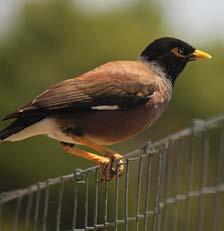
Injured wildlife
If you find an injured animal, call your local vet or Wildlife Victoria on 1300 094 535 or WIRES 1300 094 737.
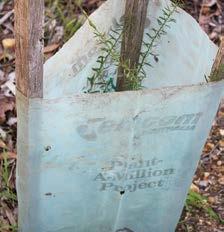
Tree guard
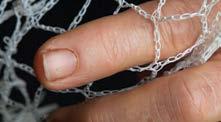

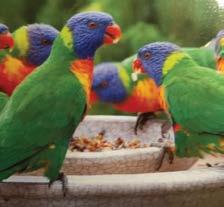
Indian Myna




